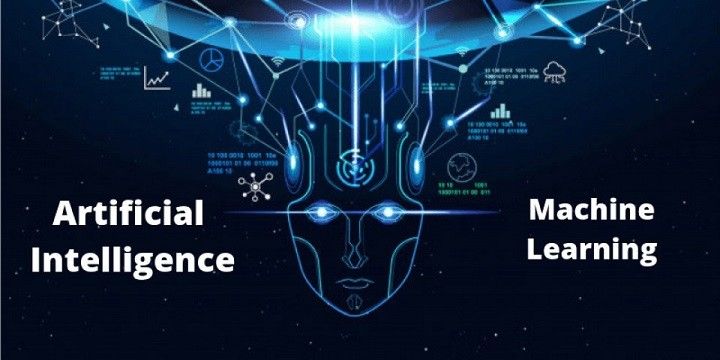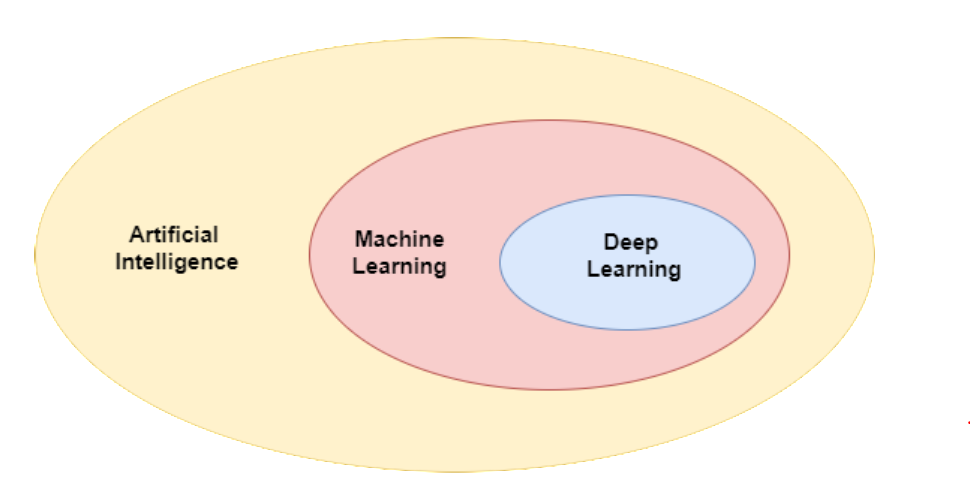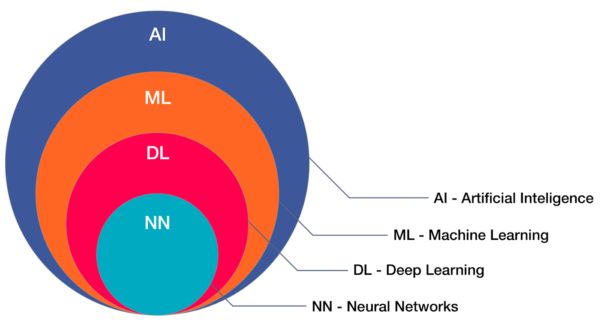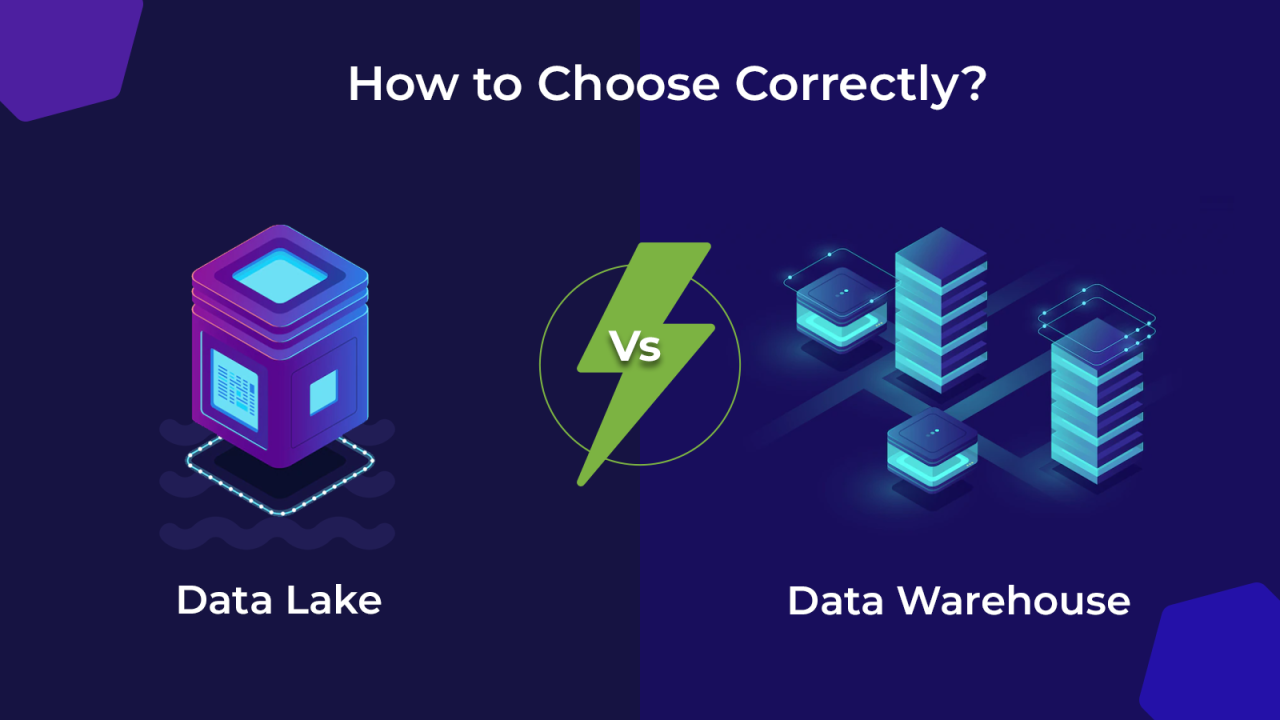The exponential growth of data, coupled with the ever-increasing complexity of business challenges, has propelled Artificial Intelligence (AI) and Machine Learning (ML) from academic pursuits to essential strategic imperatives. At the forefront of this transformation stands the AI-ML Platform, a sophisticated ecosystem of tools, infrastructure, and services designed to streamline the entire lifecycle of AI and ML models. Far from being a mere collection of algorithms, a comprehensive AI-ML platform acts as the central nervous system for data-driven intelligence, empowering organizations to extract smart insights from vast datasets, automate complex decision-making, and drive unprecedented innovation. This isn’t just about running algorithms; it’s about democratizing AI, accelerating its development, and ensuring its responsible deployment to unleash profound business value.
The Journey to Intelligent Systems: From Data to Decisions
To fully appreciate the critical role of a dedicated AI-ML platform, it’s essential to understand the historical evolution of data processing and intelligent systems, highlighting the limitations that necessitated today’s integrated solutions.
A. The Era of Manual Data Analysis
Before the advent of powerful computing and sophisticated algorithms, data analysis was a largely manual and laborious process, heavily reliant on human effort and statistical methods.
- Tabulation and Basic Statistics: Early data analysis involved manual tabulation, spreadsheets, and basic statistical calculations. Insights were derived through laborious aggregation and interpretation, often limited by the sheer volume of data.
- Human Expertise Driven: Decisions were primarily made by human experts who sifted through limited data, relying on their experience and intuition. This approach was slow, prone to bias, and couldn’t scale with increasing data complexity.
- Limitations: The ability to find subtle patterns, process unstructured data, or make real-time predictions was severely constrained. Insights were often retrospective and not predictive.
B. The Rise of Business Intelligence (BI) and Data Warehouses
The late 20th and early 21st centuries saw the computerization of data analysis, leading to Business Intelligence (BI) and data warehousing.
- Data Warehousing: Organizations built centralized data warehouses to store large volumes of structured historical data from various operational systems. This enabled consolidated reporting and trend analysis.
- Reporting and Dashboards: BI tools allowed for the creation of static reports and interactive dashboards, providing a snapshot of past performance and enabling descriptive analytics (“What happened?”).
- Limitations: While a significant improvement, BI was still primarily focused on historical data and descriptive insights. It struggled with real-time data, unstructured information, and lacked the predictive power to answer “What will happen?” or “What should we do?”. The insights were often retrospective, not proactive.
C. The Dawn of Machine Learning: Initial Challenges
The concept of Machine Learning gained traction in the early 2000s, but its initial implementation faced significant hurdles.
- Fragmented Tooling: Data scientists and engineers often had to piece together disparate tools for data ingestion, model training, and deployment. There was no integrated environment, leading to inefficiencies and inconsistencies.
- Computational Intensity: Training complex ML models required significant computational resources, which were often expensive and not easily scalable on traditional infrastructure.
- Deployment Hurdles: Moving a trained ML model from a development environment to a production system was a notoriously difficult “last mile” problem, often requiring manual efforts and specialized MLOps (Machine Learning Operations) expertise that was scarce.
- Model Management Chaos: Tracking different model versions, managing dependencies, and monitoring model performance in production (model drift) became increasingly complex as the number of models grew.
- Skill Gap: A severe shortage of data scientists and ML engineers with the specialized skills needed to build and deploy these models.
D. The Emergence of AI-ML Platforms: Integrated Solutions
The recognition of these challenges, coupled with the explosion of data and the maturity of cloud computing, led to the development of dedicated AI-ML platforms. These platforms aim to address the entire lifecycle, from data to deployed models.
- End-to-End Workflow: Providing integrated tools and services for data preparation, model development, training, deployment, monitoring, and governance.
- Scalable Infrastructure: Leveraging cloud elasticity to provide on-demand, scalable compute and storage for computationally intensive AI/ML workloads.
- Collaboration and Governance: Facilitating collaboration among data scientists, engineers, and business users, while ensuring model governance, reproducibility, and ethical AI practices.
- Democratization: Lowering the barrier to entry for AI/ML development, enabling a broader range of users (including those with less specialized skills) to build and deploy intelligent solutions.
This evolution highlights a clear trajectory: from fragmented, manual processes to integrated, automated, and intelligent systems, making AI and ML accessible and actionable for every enterprise.
Core Components of a Comprehensive AI-ML Platform
A robust AI-ML platform is a complex, interconnected system, designed to support every stage of the machine learning lifecycle, often referred to as MLOps.
A. Data Ingestion and Preparation
The foundation of any AI/ML initiative is data. A platform must provide robust capabilities for handling diverse data.
- Data Connectors: Ability to ingest data from a multitude of sources (databases, data lakes, streaming services, APIs, spreadsheets) both on-premises and in the cloud.
- Data Transformation and Feature Engineering: Tools for cleaning, transforming, normalizing, and enriching raw data. This includes feature engineering, where raw data is converted into features that can be used by ML models.
- Data Versioning and Governance: Mechanisms to track changes to datasets, ensure data quality, manage access, and comply with data privacy regulations. This is crucial for reproducibility and auditing.
- Data Labeling/Annotation: Tools for human annotation of data (e.g., labeling images for object recognition, transcribing audio) which is essential for supervised learning models.
B. Model Development and Training Environment
This component provides the tools and computational resources for data scientists and ML engineers to build and train models.
- Integrated Development Environments (IDEs): Web-based or desktop environments (e.g., Jupyter Notebooks, VS Code integration) tailored for data science workflows, with support for popular languages (Python, R) and ML frameworks (TensorFlow, PyTorch, Scikit-learn).
- Scalable Compute Resources: On-demand access to powerful CPUs, GPUs, and TPUs (Tensor Processing Units) for training large and complex models efficiently. This often leverages cloud elasticity.
- Experiment Tracking and Versioning: Tools to track different model experiments, hyperparameter configurations, datasets used, and model performance metrics. This ensures reproducibility and helps in comparing different models.
- Automated Machine Learning (AutoML): Capabilities that automate parts of the ML pipeline, such as feature engineering, algorithm selection, and hyperparameter tuning, making ML accessible to users with less specialized knowledge.
C. Model Deployment and Management (MLOps)
This is the critical bridge between model development and real-world application, often the most challenging part.
- Model Registry: A centralized repository for storing, versioning, and managing trained ML models, including metadata and lineage information.
- Flexible Deployment Options: Ability to deploy models as real-time APIs (REST endpoints), batch prediction jobs, streaming analytics, or directly to edge devices, catering to diverse application needs.
- Automated CI/CD for ML (MLOps Pipelines): Integrating model development and deployment into continuous integration/continuous delivery pipelines, automating testing, validation, and release of models, similar to software DevOps.
- A/B Testing and Canary Deployments: Tools to deploy new model versions incrementally and test their performance in production against existing versions before full rollout.
D. Model Monitoring and Governance
Once deployed, models need continuous oversight to ensure their effectiveness and responsible use.
- Performance Monitoring: Tracking key metrics like model accuracy, precision, recall, and latency in real-time, alerting on performance degradation (model drift).
- Data Drift Detection: Monitoring changes in the input data distribution over time, which can cause deployed models to become less accurate.
- Explainability (XAI): Tools to help understand why an AI model made a particular decision, crucial for debugging, auditing, and building trust in AI systems.
- Bias Detection and Fairness: Tools to identify and mitigate bias in training data and model predictions, ensuring fair and ethical AI outcomes.
- Regulatory Compliance: Features that help track model lineage, provide audit trails, and ensure compliance with industry-specific regulations and ethical AI guidelines.
E. Collaboration and Workflow Management
An effective platform facilitates seamless teamwork across diverse roles.
- Role-Based Access Control (RBAC): Granular permissions to control who can access what data, models, and platform features.
- Shared Workspaces: Collaborative environments where data scientists, ML engineers, and business analysts can work together on projects, share resources, and review work.
- Workflow Orchestration: Tools to manage the end-to-end ML workflow, from data ingestion to model deployment, ensuring smooth transitions between stages and team handoffs.
Unlocking Smart Insights: Transformative Advantages of AI-ML Platforms
The adoption of a comprehensive AI-ML platform offers profound strategic advantages, enabling organizations to leverage data for intelligent decision-making and innovation at an unprecedented scale.
A. Accelerating the ML Lifecycle and Time-to-Value
Perhaps the most significant benefit is the dramatic acceleration of the entire machine learning lifecycle, from idea to production.
- Faster Experimentation: By providing pre-configured environments and scalable compute, data scientists can rapidly experiment with different models, algorithms, and hyperparameters, significantly reducing the time spent on setup and infrastructure management.
- Streamlined Deployment: MLOps capabilities automate the complex process of deploying models to production, eliminating manual bottlenecks and ensuring that models can go from development to live use in minutes or hours, not weeks.
- Rapid Iteration and Improvement: The platform enables quick iteration on models, allowing organizations to continuously improve model performance based on new data and feedback, translating to faster time-to-value for AI initiatives.
- Reduced Technical Debt: By standardizing workflows and providing integrated tools, platforms help reduce the technical debt often associated with bespoke, fragmented ML pipelines.
B. Democratizing AI and Empowering Diverse Teams
AI-ML platforms aim to make AI accessible to a broader range of users, beyond just specialized data scientists.
- AutoML for Citizen Data Scientists: Automated Machine Learning (AutoML) capabilities allow business analysts and domain experts (citizen data scientists) to build and deploy ML models without extensive coding or deep ML expertise, broadening the base of AI creators.
- Standardized Workflows: Providing standardized templates and best practices guides users through the ML lifecycle, making it easier for new team members to contribute effectively.
- Collaboration Tools: Shared workspaces, version control for models and data, and clear role definitions foster seamless collaboration among data scientists, ML engineers, developers, and business stakeholders.
- Focus on Business Problem: By abstracting away infrastructure complexities, the platform allows teams to focus intensely on solving business problems with AI, rather than managing IT.
C. Enhancing Model Performance, Reliability, and Scalability
A robust platform directly contributes to better-performing, more reliable, and highly scalable AI solutions.
- Optimized Resource Allocation: Platforms dynamically allocate computational resources (CPUs, GPUs, TPUs) based on workload demands, ensuring optimal performance for training and inference, while optimizing costs.
- Continuous Monitoring and Maintenance: Automated monitoring detects model drift, data drift, and performance degradation in real-time, enabling proactive retraining or re-deployment, ensuring models remain accurate and reliable over time.
- Scalable Inference: Deploying models as scalable APIs or batch jobs allows organizations to handle massive prediction loads, whether for real-time recommendations or large-scale forecasting.
- Reproducibility: Comprehensive experiment tracking and data versioning ensure that model training runs are fully reproducible, critical for debugging, auditing, and validating results.
D. Strengthening Governance, Compliance, and Ethical AI
As AI becomes more pervasive, robust governance and ethical considerations are paramount. Platforms facilitate this.
- Model Lineage and Audit Trails: Platforms provide clear records of how models were built, what data they used, and who accessed them, creating an auditable trail essential for regulatory compliance and internal governance.
- Bias Detection and Fairness Tools: Integrated tools help identify and mitigate potential biases in data and model predictions, promoting fairness and reducing the risk of discriminatory outcomes.
- Explainable AI (XAI): Features that provide insights into model decision-making processes, crucial for building trust, debugging, and meeting regulatory requirements for transparency.
- Centralized Policy Enforcement: Define and enforce policies for model development, deployment, and access, ensuring adherence to organizational standards and ethical guidelines.
E. Driving Innovation and New Business Models
By providing a powerful AI engine, platforms enable transformative business outcomes.
- Predictive Insights for Business Strategy: Beyond descriptive analytics, AI-ML platforms generate predictive and prescriptive insights that inform strategic decisions, from market positioning to resource allocation.
- Automated Decision-Making: Enable automation of routine or complex decisions (e.g., dynamic pricing, fraud detection, personalized marketing offers), leading to faster response times and improved efficiency.
- New Product and Service Development: The ability to rapidly prototype and deploy AI-powered features (e.g., intelligent chatbots, personalized recommendations, automated quality control) enables the creation of innovative products and entirely new business models.
- Competitive Advantage: Organizations that effectively leverage AI-ML platforms gain a significant competitive edge by making smarter decisions, operating more efficiently, and innovating faster than their rivals.
Challenges and Considerations in Adopting AI-ML Platforms
While the benefits are compelling, implementing and leveraging a comprehensive AI-ML platform is a complex endeavor that comes with its own set of challenges.
A. Data Readiness and Quality
The effectiveness of any AI/ML initiative hinges on the availability and quality of data. Many organizations struggle with:
- Data Silos: Data being fragmented across disparate systems, making it difficult to integrate and consolidate for training.
- Data Quality: Inconsistent, incomplete, or inaccurate data that can lead to biased or poor-performing models.
- Data Volume and Velocity: Managing the sheer volume and real-time velocity of data required for large-scale AI initiatives can be technically challenging.
- Data Governance: Ensuring proper data ownership, access controls, privacy, and compliance across the organization.
B. Skill Gap and Talent Acquisition
Despite the democratization efforts, deep expertise in data science, machine learning engineering, MLOps, and platform management remains scarce.
- Shortage of Experts: A significant global shortage of experienced data scientists, ML engineers, and MLOps specialists.
- Upskilling Existing Teams: Training existing IT, development, and business teams in AI/ML concepts and platform usage requires significant investment and time.
- Interdisciplinary Collaboration: Fostering effective collaboration between diverse roles (data scientists, engineers, domain experts, business users) who speak different technical and business languages can be challenging.
C. Platform Selection and Vendor Lock-in
The AI-ML platform market is crowded and rapidly evolving, with offerings from major cloud providers (AWS SageMaker, Azure Machine Learning, Google Vertex AI) and specialized vendors.
- Complexity of Choice: Selecting the right platform that aligns with existing infrastructure, tech stack, data strategy, and specific use cases can be overwhelming.
- Vendor Lock-in: Choosing a proprietary platform can lead to vendor lock-in, making it difficult to migrate models or data to a different provider in the future.
- Integration with Legacy Systems: Integrating a new AI-ML platform with existing legacy data systems and applications can be a significant technical hurdle.
D. Model Governance, Ethics, and Explainability
As AI models move from experimental to mission-critical, governance and ethical considerations become paramount.
- Regulatory Compliance: Navigating complex and evolving regulations around AI (e.g., AI Act in EU), data privacy (GDPR), and industry-specific compliance.
- Bias and Fairness: Detecting, quantifying, and mitigating algorithmic bias in models to ensure fair and equitable outcomes for all user groups.
- Explainability (XAI): The ‘black box’ nature of complex ML models makes it difficult to understand why a decision was made, posing challenges for auditing, debugging, and building trust, especially in regulated industries.
- Responsible AI: Ensuring models are developed and deployed ethically, considering their societal impact, potential misuse, and adherence to human values.
E. Cost Management and ROI Justification
While AI promises significant returns, the upfront and ongoing costs can be substantial.
- Compute Costs: Training and deploying large-scale ML models can incur significant cloud compute and storage costs, requiring careful cost optimization and management (FinOps for AI).
- ROI Measurement: Quantifying the exact ROI of AI initiatives can be challenging, as benefits may be indirect (e.g., improved customer satisfaction, faster time-to-market) or long-term.
- Operational Costs: Ongoing costs for model monitoring, retraining, and maintenance.
F. MLOps Maturity and Tooling Immaturity
MLOps as a discipline is still maturing.
- Immature Tooling: While platforms are improving, MLOps tools are still evolving compared to traditional software DevOps tools, leading to potential gaps or complexities in automating the entire ML lifecycle.
- Process Definition: Organizations may struggle to define robust MLOps processes, leading to inconsistencies in model deployment and management.
Best Practices for Maximizing Value from an AI-ML Platform
To successfully implement and extract maximum value from an AI-ML platform, organizations must adopt a strategic, data-centric, and collaborative approach.
A. Define Clear Business Problems and Start Small
Begin with clear, well-defined business problems that AI/ML is uniquely suited to solve. Avoid chasing AI for AI’s sake. Start with small, high-impact pilot projects that can demonstrate clear, measurable ROI quickly. This builds confidence, gathers internal champions, and provides valuable learning experiences before scaling up. Examples include customer churn prediction, fraud detection, or inventory optimization.
B. Prioritize Data Strategy and Governance
A robust data foundation is non-negotiable.
- Data Quality: Invest in processes and tools for data cleansing, validation, and enrichment to ensure high-quality training data.
- Data Accessibility: Break down data silos and establish secure, centralized data lakes or warehouses that are easily accessible to the AI-ML platform.
- Data Governance: Implement strong data governance policies, including data ownership, privacy controls, compliance frameworks, and lineage tracking, to ensure data is used responsibly and ethically.
- Feature Stores: Develop a feature store to centralize, manage, and share curated features across different ML models, promoting consistency and reusability.
C. Foster a Collaborative MLOps Culture
Success hinges on breaking down silos between data scientists, ML engineers, software developers, and operations teams.
- Cross-Functional Teams: Create teams that include diverse skill sets from all relevant disciplines, fostering shared ownership of the ML lifecycle.
- Shared Tools and Workflows: Ensure all teams use the same platform and standardized MLOps workflows to reduce friction and improve consistency.
- Blameless Post-Mortems: When model failures or performance degradations occur, focus on systemic learning and improvement, rather than assigning individual blame.
- Continuous Learning: Invest in ongoing training and knowledge sharing across all teams to keep pace with rapid advancements in AI/ML.
D. Implement Robust MLOps Pipelines and Automation
Automate as much of the ML lifecycle as possible to ensure speed, consistency, and reliability.
- CI/CD for Models: Implement continuous integration and continuous delivery pipelines for ML models, automating model testing, validation, deployment, and monitoring.
- Infrastructure as Code (IaC): Use IaC (e.g., Terraform, CloudFormation) to provision and manage the underlying infrastructure for your AI-ML platform and deployed models, ensuring reproducible environments.
- Automated Model Retraining: Set up automated triggers for retraining models when data drift is detected or performance drops below acceptable thresholds.
- A/B Testing and Canary Deployments: Automate the rollout of new model versions gradually using A/B testing or canary deployments to minimize risk and validate performance in production.
E. Focus on Model Monitoring, Explainability, and Bias Detection
Deployment is not the end; it’s the beginning of continuous oversight.
- Comprehensive Monitoring: Continuously monitor model performance (accuracy, latency, throughput), data drift, and resource utilization in production. Set up alerts for anomalies.
- Explainable AI (XAI): Integrate XAI tools to understand model decisions, particularly crucial for regulatory compliance, debugging, and building trust with stakeholders.
- Bias and Fairness Audits: Regularly audit models for potential biases and unfair outcomes, taking proactive steps to mitigate them.
- Model Governance Framework: Establish a clear framework for model versioning, lineage tracking, approval processes, and decommissioning.
F. Leverage Cloud-Native Services Strategically
Utilize the managed AI/ML services offered by major cloud providers.
- Managed Training/Inference: Leverage managed services for model training (e.g., AWS SageMaker Training, Google Vertex AI Training) and inference (e.g., AWS SageMaker Endpoints, Azure ML Endpoints) to offload infrastructure management.
- AutoML and Pre-built APIs: For common use cases, explore AutoML capabilities or pre-built AI APIs (e.g., for vision, speech, NLP) to accelerate development without deep ML expertise.
- Cost Optimization: Implement FinOps practices for your AI/ML workloads to monitor and optimize cloud spending, leveraging spot instances or reserved capacity where appropriate.
G. Prioritize Security and Responsible AI
Security and ethics are paramount in AI/ML.
- Data Security and Privacy: Implement robust encryption, access controls, and data masking techniques to protect sensitive data used in AI/ML pipelines.
- Model Security: Protect deployed models from adversarial attacks and ensure the integrity of your ML pipeline.
- Ethical AI Guidelines: Develop and adhere to internal ethical AI guidelines that address fairness, transparency, accountability, and privacy. Conduct regular ethical reviews of AI applications.
The Future Trajectory of AI-ML Platforms
The AI-ML platform landscape is rapidly evolving, driven by the insatiable demand for intelligence and breakthroughs in AI research. Its future promises greater automation, accessibility, and deeper integration into every facet of business.
A. Hyper-Automation of the ML Lifecycle (AutoML 2.0)
The next generation of AI-ML platforms will feature even more advanced hyper-automation across the entire ML lifecycle, going beyond current AutoML capabilities.
- Automated Feature Engineering: AI will automatically discover, create, and select optimal features from raw data, further reducing manual effort.
- Automated MLOps: Entire MLOps pipelines will become largely self-configuring and self-optimizing, with AI managing aspects like deployment strategies, retraining triggers, and resource allocation.
- Self-Correcting Models: Models will have built-in capabilities to self-diagnose performance issues and trigger their own retraining or adjustments, requiring minimal human intervention.
B. AI-Powered AI Development (AI for AI)
A significant trend will be the use of AI to develop AI.
- Generative AI for Model Architectures: AI will design and generate novel neural network architectures or other model structures that are more efficient or powerful than human-designed ones.
- AI-Assisted Data Annotation: AI will significantly accelerate data labeling processes, leveraging active learning and semi-supervised techniques to reduce the need for manual annotation.
- AI for Hyperparameter Optimization: More sophisticated AI techniques for optimizing model hyperparameters, leading to better-performing models with less trial and error.
C. Federated Learning and Privacy-Preserving AI
As data privacy concerns grow, AI-ML platforms will increasingly support techniques that allow for model training on decentralized data.
- Federated Learning: Training models on distributed datasets located on edge devices or in different organizations without the raw data ever leaving its source, enhancing privacy and security.
- Homomorphic Encryption and Differential Privacy: Integrating advanced cryptographic techniques that allow computations to be performed on encrypted data, further protecting privacy during model training and inference.
D. Explainable and Responsible AI (XAI 2.0)
The imperative for transparent and ethical AI will drive significant advancements in XAI capabilities.
- Native Explainability: Models will be designed from the ground up to be more inherently interpretable, moving beyond post-hoc explanations.
- Automated Bias Remediation: Tools that not only detect bias but also automatically suggest or implement strategies to mitigate it within the model or data.
- Regulatory Compliance as Code: Platforms will offer more robust, automated features to ensure models adhere to specific legal and ethical guidelines, providing verifiable audit trails.
E. Edge AI and Hybrid AI-ML Deployments
The proliferation of IoT and the need for real-time inference will drive AI-ML platforms to seamlessly support edge deployments.
- Edge-to-Cloud MLOps: Unified platforms that manage the lifecycle of models deployed on tiny edge devices (e.g., smart cameras, sensors) as well as large cloud-based models, including continuous updates and monitoring.
- Hybrid Training/Inference: Models trained in the cloud and then deployed to the edge for inference, or models partially trained at the edge before aggregation in the cloud.
- Low-Power AI Hardware Integration: Platforms optimized to leverage specialized, energy-efficient AI accelerators designed for edge devices.
F. Industry-Specific AI-ML Platforms
While general-purpose platforms will remain, there will be a rise in highly specialized, industry-specific AI-ML platforms.
- Healthcare AI: Platforms tailored for medical imaging analysis, drug discovery, or personalized medicine, with built-in compliance for regulations like HIPAA.
- Financial AI: Platforms designed for fraud detection, algorithmic trading, or risk management, with robust security and regulatory adherence for financial services.
- Industrial AI: Platforms optimized for predictive maintenance in manufacturing, supply chain optimization, and quality control in industrial settings.
Conclusion
The era of AI-ML Platforms represents a pivotal moment in the quest for smart insights. These sophisticated ecosystems are transforming the once complex and fragmented process of building and deploying intelligent systems into a streamlined, automated, and collaborative endeavor. By providing comprehensive tools for data management, model development, deployment, monitoring, and governance, AI-ML platforms are democratizing AI, accelerating innovation, and enabling organizations to extract unprecedented value from their ever-growing data reserves.
While the journey to fully leverage these platforms involves navigating challenges such as data quality, skill gaps, and ethical considerations, the benefits are profound: faster time-to-value, enhanced model performance, strengthened governance, and the ability to drive truly transformative business outcomes. The future trajectory of AI-ML platforms points towards hyper-automation, AI-powered AI development, robust privacy-preserving techniques, and deeper integration into every industry. For any enterprise seeking to remain competitive and unlock the full potential of its data in an increasingly intelligent world, embracing a comprehensive AI-ML platform is not merely an option; it is the definitive blueprint for unleashing smart insights and shaping the digital future.














